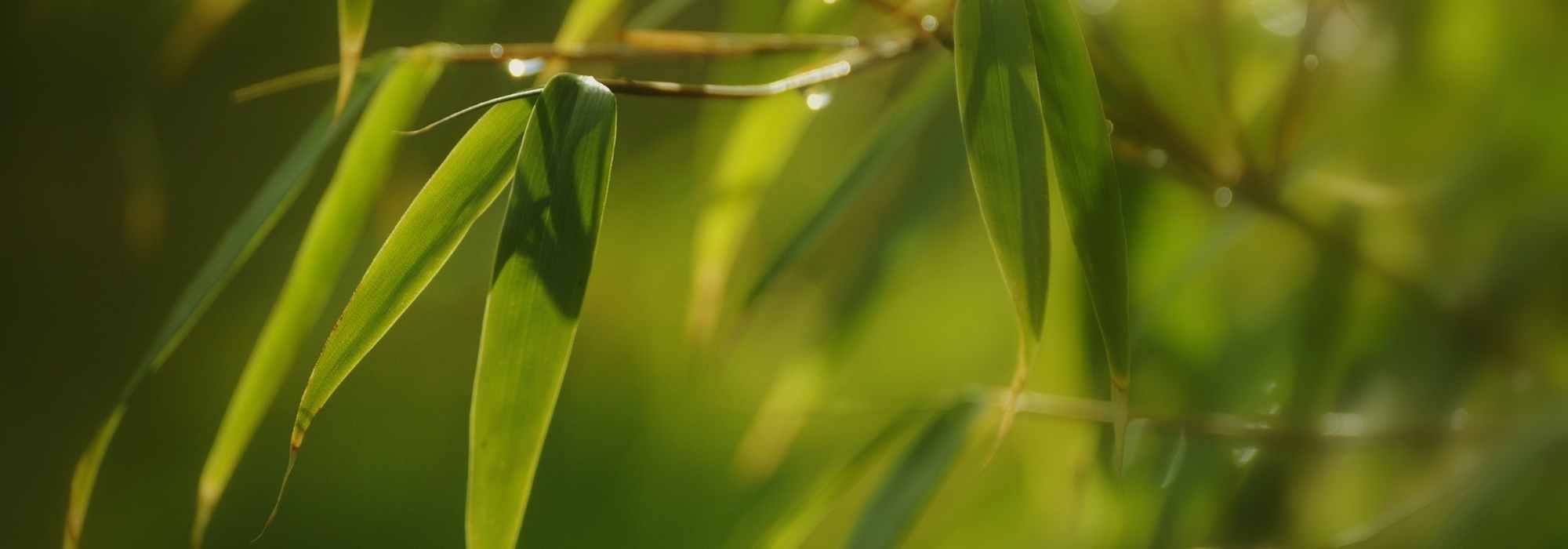
Bamboo, Fargesia: planting and care
Contents
Fargesia in a nutshell
- Non-running, Fargesia has the advantage of being less invasive than other bamboos
- It forms a dense clump of fine, tightly packed canes with good screening power
- With its evergreen foliage, it creates a true green screen all year round
- It is particularly suited for creating a privacy or windbreak hedge, in the ground or in pots
- Very hardy, it can be grown easily in full sun or partial shade, in well-prepared ordinary soil
A word from our expert
Fargesia is a non-running bamboo, perfect for greening your garden with peace of mind. Compact and non-invasive, this species of cespitose bamboo is an excellent alternative to Phyllostachys, known for its invasive nature! The Fargesia family includes dozens of cultivars, most often derived from Fargesia rufa, F. robusta, the most resistant to sun and drought, like robusta Campbell, F. murielae, F. denudata, and Fargesia nitida.
Depending on the variety, the colour of the foliage and their fine, tight culms varies from green to golden yellow, mahogany black, and steel blue.
All form a clump of evergreen foliage reaching heights of 2 to 5 m at ripeness. Fargesia is ideal for quickly creating beautiful privacy or windbreak hedges, vegetative noise barriers, and small exotic groves without the need for rhizome barriers.
Requiring little maintenance, it withstands cold perfectly (down to -30 °C for some), and grows easily in full sun or partial shade in well-drained ordinary soil. It is also a beautiful specimen to install in a pot on the terrace or balcony.
Discover our range of Fargesia bamboos and choose the one that will add a touch of exoticism to your garden or terrace!

Fargesia Rufa, Fargesia murielae, Fargesia denudata (© Cultivar 413)
Description and botany
Botanical data
- Latin name Bambuseae fargesia
- Family Poaceae
- Common name Fargesia
- Height 2 to 5 m
- Exposure sun, partial shade
- Soil type rich and light
- Hardiness below -15°C
Fargesia is a bamboo described as cespitose, meaning it is non-running. Like all bamboos, it belongs to the Poaceae family, the grass family. It originates from the humid forests of China and the Himalayas, which explains its excellent hardiness (down to -30°C for some species of Fargesia).
There are over 80 genera and more than 1000 species of bamboo. They are classified according to their size and growth type: the running species like Phyllostachys, which spread quickly if not limited by a rhizome barrier, and non-running bamboos like Fargesia that grow in a compact clump and are non-invasive. The genus Fargesia includes around a hundred species such as Fargesia rufa, F. robusta, F. murielae, F. denudata and Fargesia nitida, which are the most common and from which dozens of cultivars have been developed.
This non-running bamboo has cespitose rhizomes that develop around and inward within the clump, keeping it very dense without becoming bare in the centre. It exhibits a rather slow growth rate in the first few years. Fargesia then grows quickly in height and spreads slowly over time without ever becoming invasive.
It thickens but does not spread. Fargesia is well-suited to small spaces, remaining well-contained, requiring no rhizome barriers, and is unlikely to escape beyond the boundaries set for it in the garden.
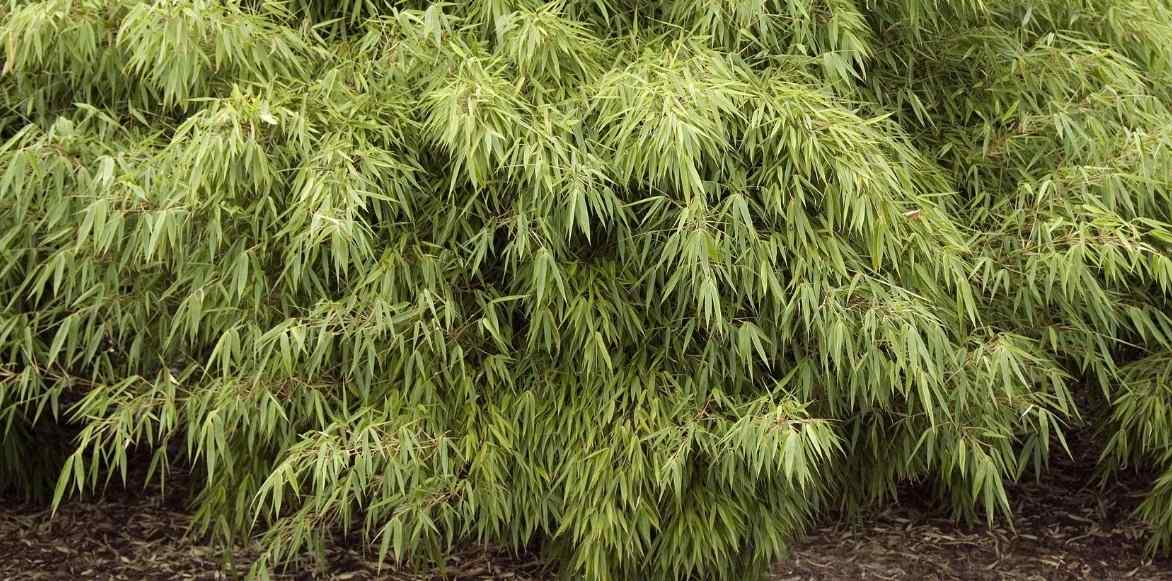
Fargesia Rufa
It reaches a height of 2 to 5 metres with a maximum width of 80 cm to 3 m at the base within a few years, approximately four to five years. It takes a bit longer to thicken than running varieties. It forms a large clump of persistent foliage, compact and tight, flaring upwards. The habit is upright, sometimes almost columnar, elegant and flexible. Often, the top of the clump droops slightly; more rarely, it takes on the appearance of a mini weeping willow (Fargesia denudata ‘Lancaster 1’).
The plant develops upright canes or culms that are fine, flexible yet sturdy, with a variable diameter ranging from less than 1 cm to a maximum of 2 cm. They feature nodes that are white, yellow, green, or dark purple. Young culms are sometimes covered with a white or purple bloom in the juvenile stage. They take on a more intense colour in the sun that fades or changes over time. Their colours vary by variety, ranging from bright green in Fargesia robusta, to steel blue in Fargesia papyrifera ‘Blue Dragon®’, orange in Fargesia Jiu, dark purple in Fargesia sp Jiuzhaigou ‘Deep Purple ®’ and finally black in Fargesia ‘Black Dragon ®’. Some culms, like Fargesia robusta ‘Pingwu’, are adorned with persistent white cauline sheaths, creating strikingly graphic contrasting effects.
The persistent foliage in winter is present almost all the way up the culms and is often denser towards the top. The fine branches emerge from the nodes and further divide into thin secondary branching. They bear narrow, lanceolate leaves that taper at the tips. The foliage is more or less dense depending on the varieties. Fargesia robusta ‘Wolong’ and ‘Wenchuan’ are distinguished by their larger and wider leaves compared to other varieties, giving them a more exotic and lush appearance.
The leaves are dark green to bright green, sometimes slightly bluish or edged in yellow. They have a lighter underside. They dry and then fall, but the foliage continuously renews itself.
The flowering of Fargesia takes the form of panicles or terminal clusters, but it is very rare and irregular in cultivation.
Finally, the young shoots (or shoots) are edible once boiled.
Read also
Bamboo: a successful planting in 4 stepsWhat are the varieties of non-running bamboos?
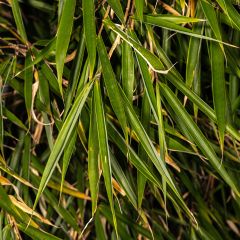
Fargesia rufa - Non-running Bamboo
- Height at maturity 2,75 m
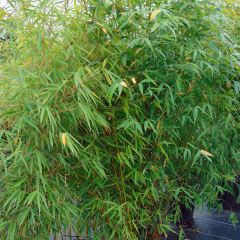
Fargesia robusta Campbell
- Height at maturity 4 m
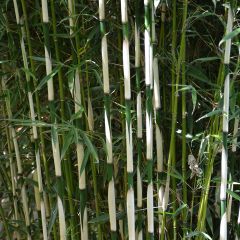
Fargesia robusta Pingwu - Non-running bamboo
- Height at maturity 4,50 m
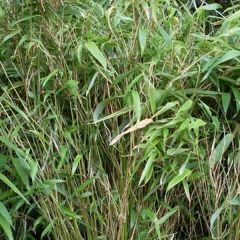
Fargesia murielae Bimbo
- Height at maturity 1 m
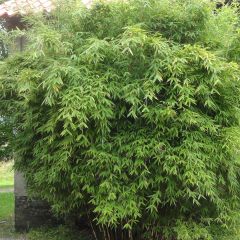
Fargesia murielae Dino - Non-running bamboo
- Height at maturity 4,50 m
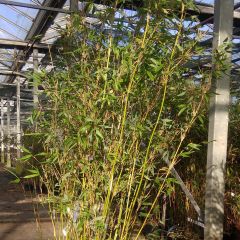
Fargesia denudata Lancaster 1
- Height at maturity 3 m
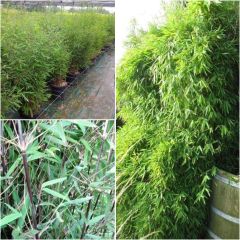
Fargesia nitida Black Pearl
- Height at maturity 2,25 m
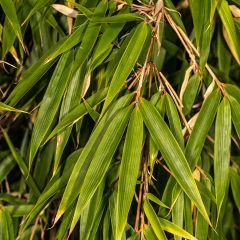
Fargesia robusta - Non-running Bamboo
- Height at maturity 4 m
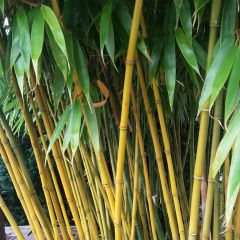
Fargesia robusta Wolong
- Height at maturity 5 m
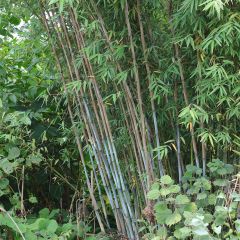
Fargesia papyrifera Blue Dragon - Non-running bamboo
- Height at maturity 6 m
Discover other Fargesia
View all →Available in 2 sizes
Available in 1 sizes
Available in 2 sizes
Available in 3 sizes
Available in 3 sizes
Available in 1 sizes
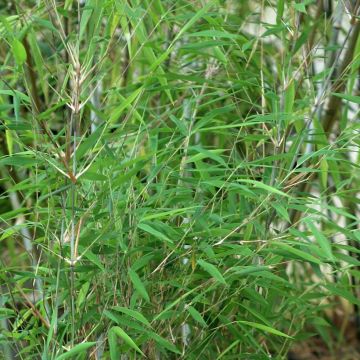
Available in 1 sizes
Available in 2 sizes
Available in 1 sizes
Available in 1 sizes
Planting Fargesia bamboos
Where to plant them?
Perfectly hardy, the vast majority of Fargesia can withstand temperatures down to -20/-25°C. They can be planted anywhere in France. They thrive in all garden soils. However, they establish more slowly in poor soil. The quality and moisture content of the soil determine their growth rate and development. They will grow faster in slightly moist soil during summer, as they are sensitive to drought. Plant them in neutral or acidic soil, low in lime, light, remaining cool during hot periods, and well-drained. They do not tolerate having their roots in water during winter.
They prefer partial shade to direct sunlight, although some, like Fargesia robusta, tolerate full sun and drought well. They are best planted sheltered from cold, dry winds, to which they are quite sensitive.
Non-running, with a beautiful density and rapid growth, Fargesia bamboos are particularly suited for creating beautiful evergreen hedges that provide privacy or windbreaks. Allow them enough space to express their full beauty. When planted en masse, they can quickly create small, exotic-looking forests that are very refreshing. Their strong presence and dense, elegant silhouette also make them suitable for solitary planting, at the back of a border, or by a pond. They can also be grown in pots. On a terrace or balcony, they will form a green screen to manage unsightly views or create intimate spaces.
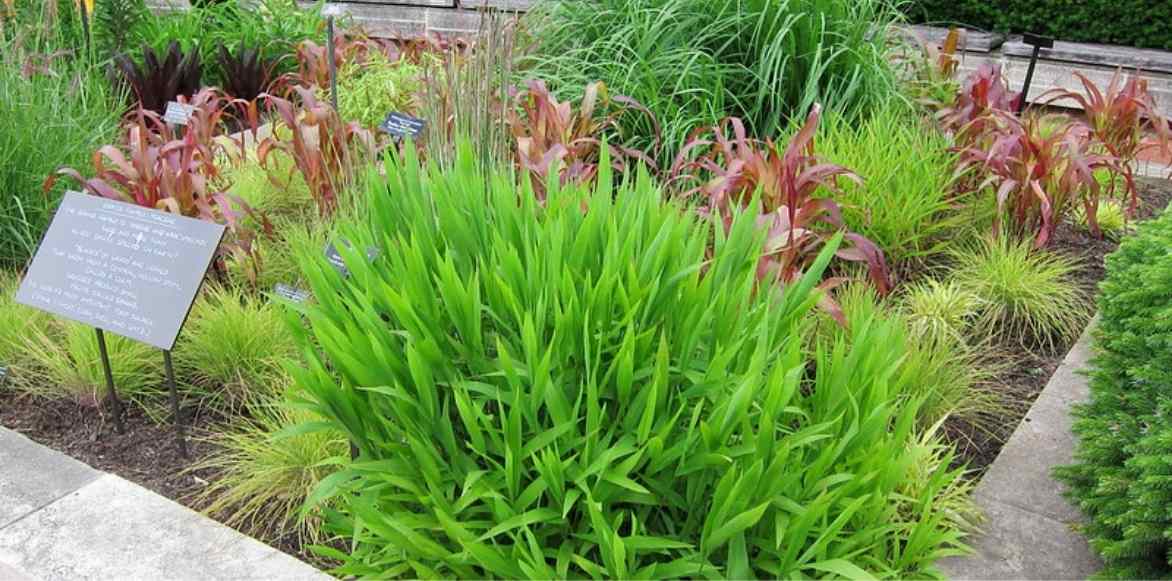
Fargesia rufa ‘Qingchuan Panda’ in the foreground, in a mass with Pennisetums, Melinus neviglumis, and Chasmanthium latifolium (© Cultivar 413)
When to plant Fargesia bamboo?
The planting of Fargesia bamboos is best done preferably in late summer and autumn, after the heat of summer when the soil is warm and rainfall is more frequent, as they need plenty of water to establish well.
How to plant Fargesia bamboos?
In the ground
Installing a rhizome barrier (thick, durable polypropylene film) is unnecessary. For mass planting, allow a planting distance of about 0.8 to 1 metre between each plant. For hedges, maintain a spacing of 60 to 80 cm.
- Before planting your bamboo in the ground, thoroughly moisten the root ball by soaking it for at least 30 minutes
- Dig a wide and deep planting hole, loosening the soil well
- Place the root ball in the centre of the hole, ensuring the collar of the plant is well buried
- Fill in with enriched garden soil mixed with well-decomposed compost
- Add a few centimetres of turf on the surface
- Mulch with wood chips or pine bark
- Water generously and ensure the soil remains consistently moist, both summer and winter, during the first year after planting
In a pot
Fargesia bamboos adapt very well to pot culture, provided that watering is carefully managed.
- Choose a pot with a minimum depth of 50 cm
- Ensure it has drainage holes at the bottom for good drainage
- Moisten the root ball before planting
- Fill the bottom of the pot with clay balls (gravel or pumice)
- Plant the bamboo and fill in with a rich mix of topsoil and potting soil
- Water abundantly and regularly
- Mulch with pine bark
- Place the pot in a sunny spot that is not scorching and sheltered from drafts, and monitor watering, especially during prolonged dry spells
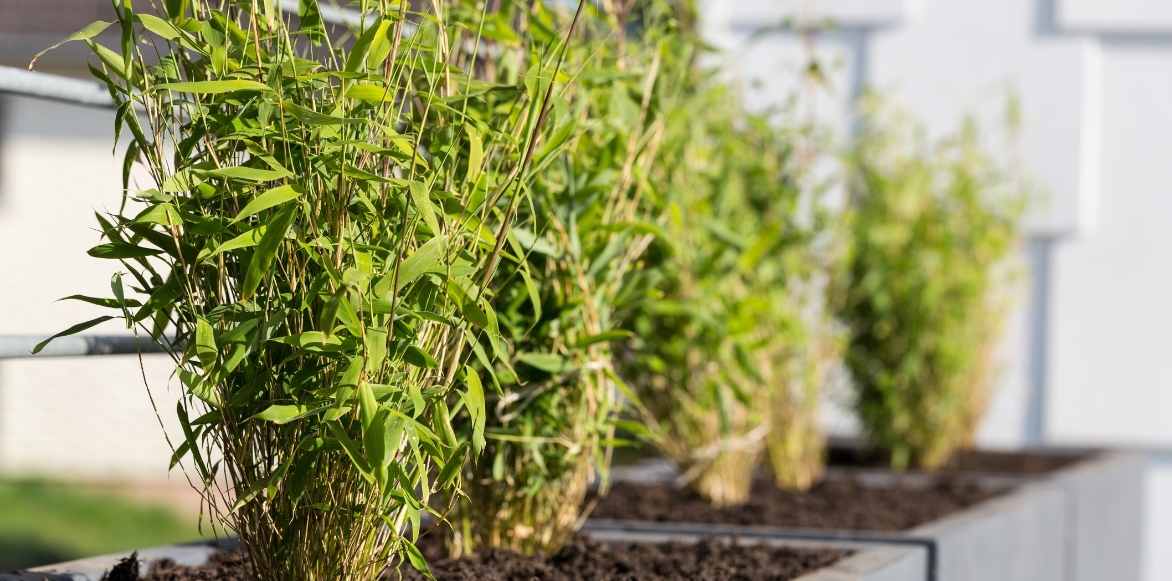
Read also
6 bamboos to grow in potsGrowing, care and maintenance
Once well established, Fargesia bamboos are low-maintenance, but like all bamboos, they are thirsty plants. They require regular watering to root well and grow quickly, at least during the first year in the ground and continuously if grown in pots. Bamboos must never lack water. In the ground, water once a week in summer or provide 15 to 20 litres of water every 15 days or so. In the southern regions of France, water more frequently and mist the foliage in the evening during heatwaves.
Potted bamboos dry out more quickly: in summer, provide up to 5 litres of water per day and ensure the soil never dries out too much between waterings.
Remember to weed around the base from time to time.
A good mulch will help keep the soil moist in summer and winter during the first few years. After that, they will mulch themselves with their dry leaves.
Water even in winter, as frost can prevent your bamboos from accessing water in the soil.
Good to know: if the leaves curl inwards, it’s a sign that your bamboo is thirsty!
Bamboos thrive in rich, fertile soil. In spring and autumn, apply compost by scratching it into the base. Bamboos grown in pots will also appreciate a dose of compost or special bamboo fertiliser, rich in nitrogen.
In February-March, before the growth resumes, simply clean the clump to remove the sheaths of the culms and any dried canes. In summer, you can prune and thin your bamboo hedges to cut back the new shoots.
⇒ To learn everything about the maintenance and potential diseases of your bamboos, check our article “Maintenance, pruning and care of bamboo”
Diseases and potential pests
Bamboos are resistant to most diseases and pests. However, slugs and snails may sometimes nibble on the young shoots of Fargesia: to protect them, discover our natural solutions!
Bamboos grown in pots are sometimes susceptible to mealybugs: spray a mixture of vegetable oil (rapeseed or olive oil), 90° alcohol, and black soap.
In summer, if the air is very dry and windy, red spider mites can also cause yellowing and drying of the leaves: to prevent their establishment, shower the foliage of your bamboos with a water jet morning and evening.
→ Learn more in our article Bamboo diseases and pests
Multiplication
Clump division in spring, in March-April allows you to easily multiply your bamboos.
- Using a sharp spade, take a nice clump about 30 to 40 cm wide and deep from an already well-established clump: it should contain the maximum number of rootstocks.
- Shorten the culms by one-third of their length while always keeping some foliage.
- Replant the clump in a well-prepared planting hole.
- Water generously and keep the soil moist to encourage recovery.
Associating
With their graceful and graphic silhouette, Fargesia bamboos integrate seamlessly into all gardens, whether exotic, natural, contemporary, or inspired by Asia.
They provide a light structure to a shrub bed, where their upright habit offers a lovely contrast in shape with camellias and bush hydrangeas, which are more compact. They also pair well with evergreen shrubs such as Nandina domestica, or heavenly bamboo, euonymus, holly, or conifers.
At the back of a tropical-style bed, they blend beautifully with many lush-leaved plants such as Mahonia, Fatsia japonica, or large arborescent ferns, for example.
They are easy to combine with other Asian plants, such as Japanese forest grass, Japanese maples, or Chinese palms. To create a Japanese-inspired atmosphere, choose Fargesia ‘Black Dragon ® with its beautiful black canes and plant at its base a phormium ‘Dark Delight’ and Ophiopogon planiscapus ‘Nigrescens’.
Large grasses such as Chinese fountain grass, pampas grass, or miscanthus will also be good companions for these robust bamboos.
Certain perennials, such as Cannas, viticella clematis, and large Dahlia imperialis will rise up to flower their culms.
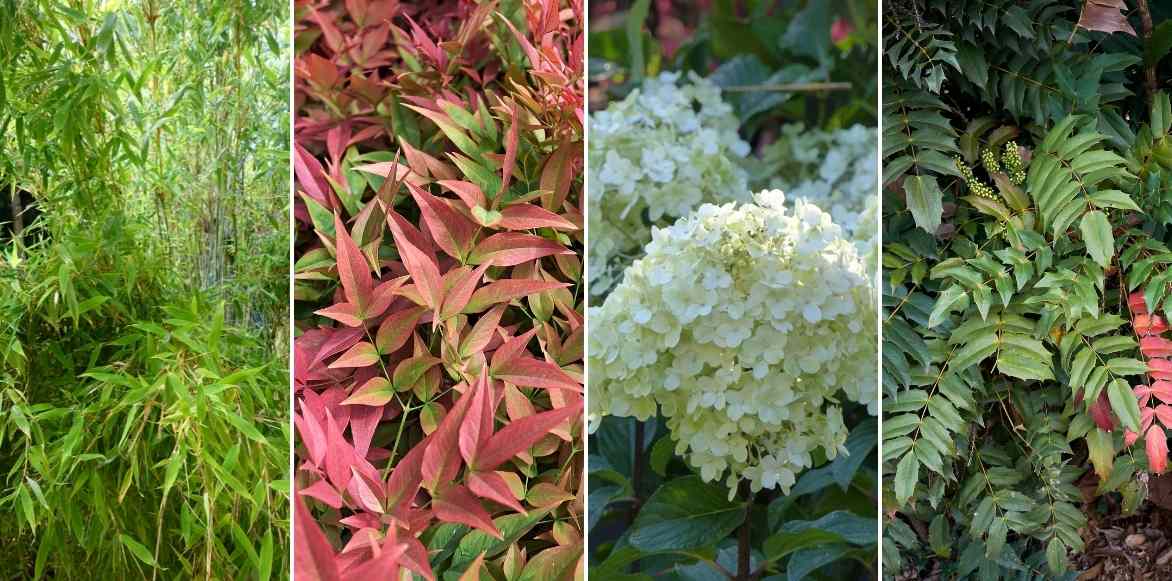
Fargesia murielae, Nandina domestica, Hydrangea arborescens ‘Limelight’ and Mahonia
Useful resources
- Discover our wide range of bamboos, selected for their beauty as well as for the non-invasive nature of some!
- Founded in 1856, the Bambouseraie d’Anduze in the Cévennes in France hosts a great many varieties of bamboo.
- Article: Bamboo hedge, which varieties to choose? and Which Fargesia for a hedge?
- Discover 6 bamboos with coloured culms
- Discover 6 non-running bamboos
- Find our tips on how to water a bamboo in a pot properly.
- Discover our selection of 6 fast-growing bamboos
- Discover our series on travelling plants: bamboo
- Our article: Fargesia, the most beautiful varieties
- Find our tips on: How to create a bamboo hedge?
- Discover why a bamboo flowers, and what to do?
- Subscribe!
- Contents































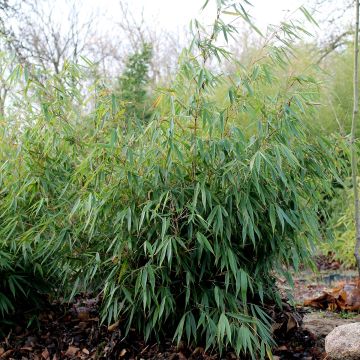

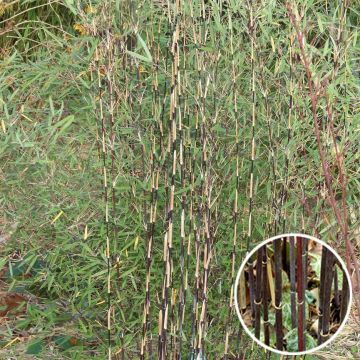
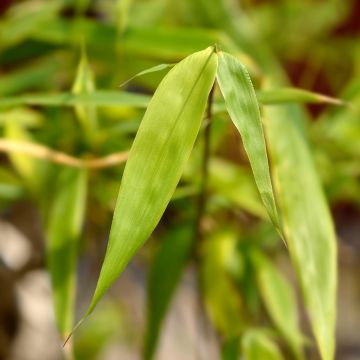

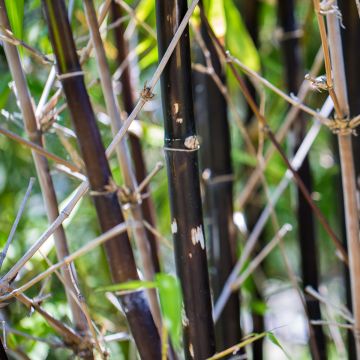
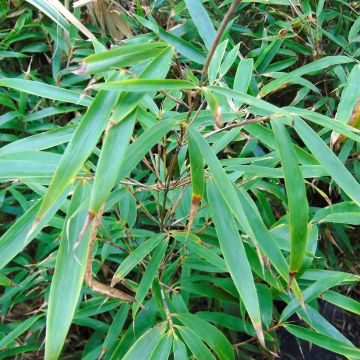
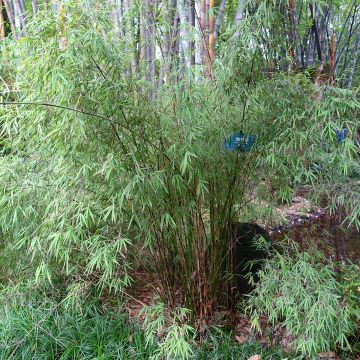
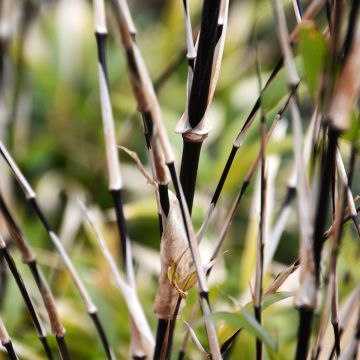
Comments